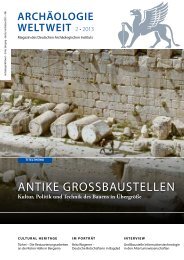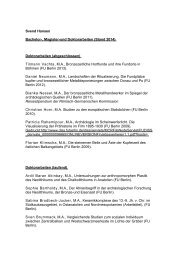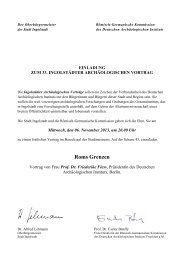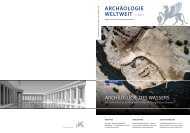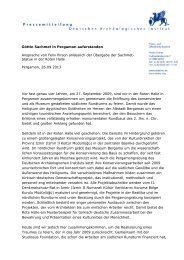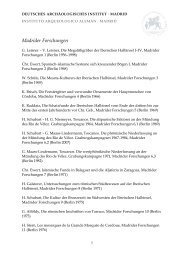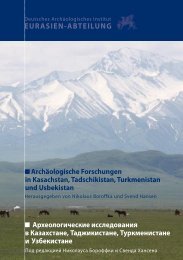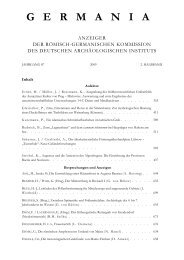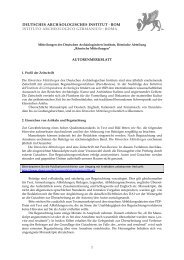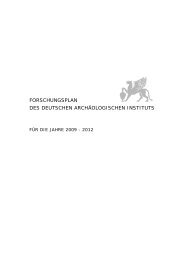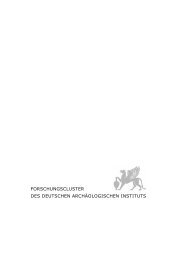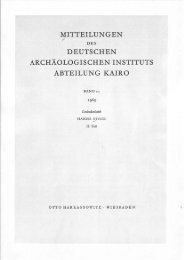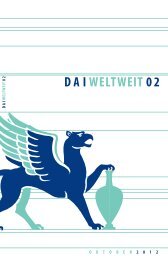Untitled - Deutsches Archäologisches Institut
Untitled - Deutsches Archäologisches Institut
Untitled - Deutsches Archäologisches Institut
You also want an ePaper? Increase the reach of your titles
YUMPU automatically turns print PDFs into web optimized ePapers that Google loves.
Oinoanda – physics by the metre<br />
In the documentation of the ruins at Oinoanda in northern Lycia a milestone has been<br />
achieved in 2011 with the complete, stone-by-stone documenting and drawing of the<br />
Hellenistic city wall, of which a section over 60 m long is preserved. The monument, which<br />
lies at the southern extremity of the acropolis, can be regarded as one of the most significant<br />
specimens of defensive architecture in Asia Minor in<br />
antiquity. Overhanging wall-walks, shooting loops with<br />
precisely calculated angles, and a sophisticated construction<br />
technique are among the features that have now<br />
been documented, allowing a more exact classification in<br />
Hellenistic architecture.<br />
However, as in previous campaigns, the main focus of the<br />
work at Oinoanda this year was Diogenes’ inscription.<br />
More than fifty fragments of the philosophical inscription,<br />
some of them weighing up to 500 kg, were salvaged<br />
from the terrain and moved to the depot built for them<br />
the previous year. Thus more than half of the known<br />
fragments are now safely stored in the building. During<br />
the salvage operation and the surface surveys, a further<br />
16 new fragments of the inscription came to light. One of<br />
the newly discovered pieces on the subject of physics fits<br />
together with existing fragments, resulting in a continuous<br />
sequence of text now nearly 5 m long which can be<br />
read in its entirety for the first time (Fig. below).<br />
Surface surveys resulted in the discovery of new fragments<br />
from the city’s non-philosophical inscriptions,<br />
including a memorial plaque which allows us to date the<br />
older of the two municipal thermae precisely to the year<br />
73 AD. Furthermore, it proved possible to fill in blank<br />
spaces on the topographical map of Oinoanda, which<br />
is one of the chief objectives of this research project.<br />
Among these are, firstly, the settlement known today as<br />
Kemer arası, at the foot of the hill, which began to eclipse<br />
Oinoanda in importance in late antiquity, and secondly<br />
an extra-urban sanctuary. These discoveries allow us to<br />
better understand important chapters in the history of<br />
the city of Oinoanda.<br />
Martin Bachmann



